How to Make Food Prep and Storage Equipment Easy
Do food prep and storage equipment go together? Yes, they do! Let me ask you a very important question. If a natural disaster were to strike your region today, would you have enough food tucked away for your family to survive for several days? If the answer was no, what are you waiting for?
But even if your answer was yes, there may be a few things that you’re currently doing wrong that could have a negative impact on your food supply when you go to use them. I’d love to help you with that, so be sure to check out all my food prep and storage equipment tips that you’ll need for your emergency food supply.
In case you missed this post, 11 Canned Meat Ideas I Recommend, The Best Portable Water Filtration Unit
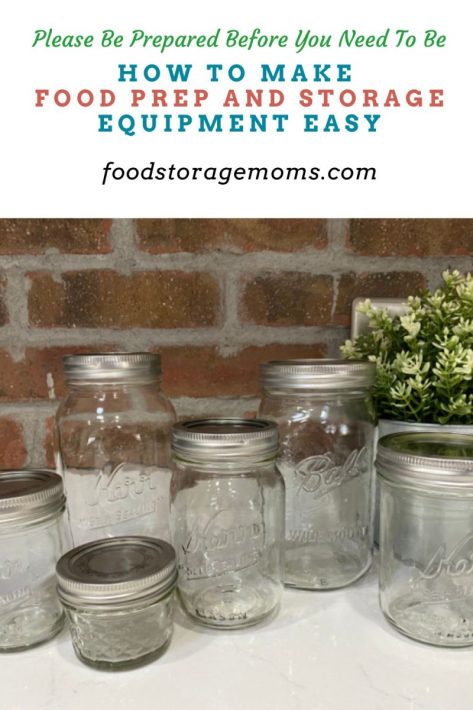
Food Prep and Storage Equipment
Most people simply don’t realize how quickly our food supply can be disrupted, especially when a major natural disaster is involved. That’s why every home should have at least a 3-day supply of food on hand because it could be several days before your local grocery store is able to restock. Make sure that you stock up on foods that:
- Have a long shelf life. I like freeze-dried foods since they have longer shelf life than dehydrated foods. This approach to food prep and storage has nothing to do with your own freezer or fridge. Freeze-dried foods go through a preparation process that is fairly extensive. Yes, you can freeze your food, but if you lose power you’ll be challenged to keep those foods consumable for very long.
- Don’t require any cooking, water, or refrigeration. This is because utilities may be disrupted and not available. Many of the freeze-dried foods I reference above can be eaten right out of the container without further preparation.
- Contain very little salt. This chemical will only make you thirstier, and water may already be in short supply.
- Meets each of your family member’s needs. This is especially true for those on a special diet like the elderly and if you have a baby. Think about what your family likes to eat and then purchase those items for storage. Canned goods can include meat, veggies, fruits, beans, tuna, and more. You can also consider storing grains, nuts, healthy snacks, and other nutrient-rich foods. Preppers are always looking for a recipe that can use the food they have stored. Meal plans are always an important part of any preparedness plan. When you go shopping, always take your grocery list with you and try to stick with that meal plan list. Key ingredients make for a more healthy family during a survival situation when any disaster strikes.
- Meets the needs of your pets. We consider ourselves self-reliance oriented. Our pets look to us for protection and safe treatment on their behalf.
How to Properly Store Emergency Food
When it comes to storing food for emergencies, you don’t necessarily have to buy the dehydrated emergency foods that come in big buckets that you’ve probably seen in some big box stores and online. You can prepare and store your own food, which can be just as effective as long as you know the proper ways to go about it. These are a few things for you to keep in mind:
- Prolong the shelf life of your emergency food supply by storing them in the proper storage conditions. The best place to keep your food supply is in a dark, cool, and dry place such as a basement or a root cellar. The ideal temperature would be between 40F and 70F degrees. I personally don’t have this option as we prepare to build a new home. So I realize my food storage that says 25 years will be more than likely 15 years or less. It is what it is. I don’t have a storage area that is that cool.
- Keep up with the expiration dates on your canned goods and dry packages. Use it up before it expires, but don’t forget to rotate it as needed and replenish it when consumed. If you’ve prepared any homegrown food and stored it away, it typically needs to be thrown out after a year. Staying on top of your storage inventory is one survival skill we should all strive for.
- Protect your food from insects and rodents. Paper cartons and boxes may not be enough for your food to hold up when attacked by bugs and rodents. Following a natural disaster, you may have rodents or insects that find their way into your home, and they’ll find a way to chew through the packaging. If on a limited budget, you should consider trying to heavily wrap them, or better yet, place them in an airtight container that’s also waterproof. I have dozens of these, Rubbermaid Commercial Containers. Keeping these pests out of our food supplies is a good use of our resources and a means to follow some proper sanitation efforts.
- Keep your food supply far away from ranges, refrigerator exhausts, heater vents, and any other type of heat. Heat can cause your food to age and spoil more quickly.
- Be sure to store your food supply away from any hazardous petroleum and chemical products. Some of these include oil, gasoline, and harmful solvents. There are certain foods that can actually absorb the smell and trust me, that won’t be something that your family will be able to eat.
Different Types of Food Storage Equipment
When it comes to storing food for emergencies, you have several different options to choose from as follows:
Airtight Containers: These are typically made from plastic, come in various sizes, and can be used for both dry goods and liquids. I love these for my pantry and refrigerator, Rubbermaid Food Storage Containers with Lids
Mylar Bags: These bags are often used for long-term storage because they have the ability to block air, moisture, light, and odors. They’re also very durable, so you don’t have to worry about any punctures or tears if you buy the thicker varieties. You will still want to store them in a bucket because mice or rodents can chew threw them. Honest disclosure here, I have chosen not to use these. It’s a personal preference.
Food-Grade Buckets: These buckets can also be used for long-term food storage purposes, and some even come with an oxygen absorber that helps maintain freshness. Just make sure this and other plastic containers are labeled as “food grade” because others may contain harmful chemicals that could seep into your food supply.
Glass jars: These jars can be used for both short and long-term storage. The lids create an airtight seal, they come in a variety of sizes, and they can also be reused over and over again. I love these for brown sugar, Airtight Mason Glass Jars You do have to be cautious with glass since it breaks easily and can cause harm to those trying to clean up the sharp shards.
Vacuum Sealer: This machine is mainly used for storing meats or fish, but it can also work well with dry goods and vegetables. It removes all the air from the packaging to extend its shelf life. I use mine for quart and pint jars when filling dry items. FoodSaver with Attachments
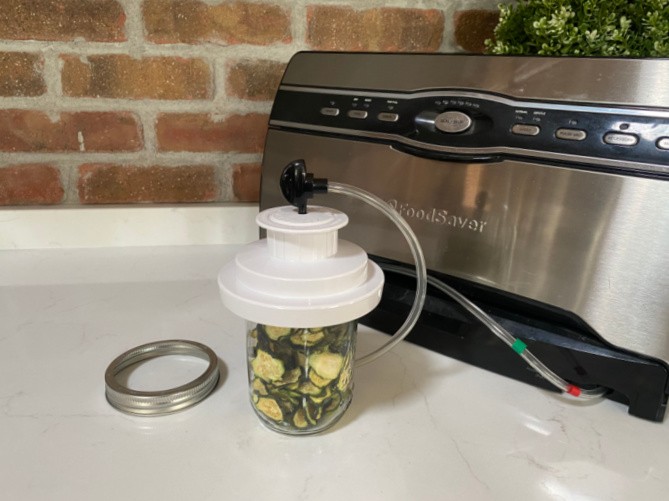
Preparing Food after an Emergency
Unfortunately, there’s no way around it, preparing a meal for your family following an emergency will be a little more difficult than before. Especially if you’re dealing with a power outage. But you can make things a little easier by having the following items set aside beforehand:
- Propane gas or charcoal grill. Never use these cooking equipment units indoors. You’ll need pots and pans if you do have food stored that requires cooking.
- Cooking fuel (charcoal, propane, etc.). Should always be stored and used outdoors.
- Heavy-duty aluminum foil.
- Manual can and bottle openers.
- Cooking utensils.
- Forks, spoons, and knives.
- Paper towels, plates, and cups. You’ll also need a good supply of toilet paper. I’ve promoted the use of portable toilets you can build yourself. The post showing how to build one is in my archive, check it out.
- Note that I haven’t listed any weapons, including firearms. Those are personal preferences and can make a difference in many situations, but I don’t speak to that subject often.
- If you do need to evacuate, you’ll need to for sure remember your bug-out bags for all the family members.
Preparing an Emergency Water Supply
Along with having an emergency food supply, it’s just as important to have an emergency water supply on hand. The recommended amount is 1 gallon per person per day for at least three days. I have always suggested 4 gallons per person per day so you can stay hydrated, cook your food, do some limited laundry, and provide some minimal personal hygiene.
- You should also take the time to boil, purify, or filter any sources of water that may be available during a natural disaster, such as rivers or ponds. This can easily be done by boiling it for 1 minute (at altitudes above 6,562 feet, boiling for 3 minutes is required), or using purification tablets and following the instructions on the package.
- Water storage containers are also essential in keeping your water supply clean until you need it. When storing the containers, make sure they’re not in direct sunlight. Keep up with rotating the water every six months if unscented bleach is used to ensure they don’t become contaminated. I like a product called WaterPreserver. It requires the replacement of the water every five years, what a time and resource savings.
- In the event of a natural disaster, remember that you can also collect rainwater in clean containers to add to your emergency water supply. Just make sure they are covered and stored properly to prevent further contamination. I like both the Big Berkey and PortaWell water filtration systems.
Water Storage Equipment
While you certainly have the option of storing your water in gallon containers, clean empty milk containers, or simply buying 24 packs of bottled water, this can take up a lot of space in your home. If you have the storage space available, I recommend that you go with one or a couple of 55-gallon plastic drum containers to store the bulk of your drinking water. Make sure you invest in a Bung to tighten the caps on top and a 55-gallon Water Pump. Augason Farms Water Storage Barrel 55-Gallon Drum (These have really gone up in price, yikes).
The 55-gallon water barrels are not my favorite, but they are more affordable than other containers. Be sure and keep your water containers from being stored directly on any cement or concrete by placing your water containers on 2 by 4’s placed on the floor or on pallets. This will keep your water from chemicals leeching from the concrete into your container and the water.
Final Word
Being prepared with the proper food prep and storage equipment can make all the difference in the world during a natural disaster. Keep your family safe by staying stocked up and informed on how to properly store and prepare meals during emergencies. My goal is to help my readers to be sure to stay safe out there! May God Bless this world, Linda.

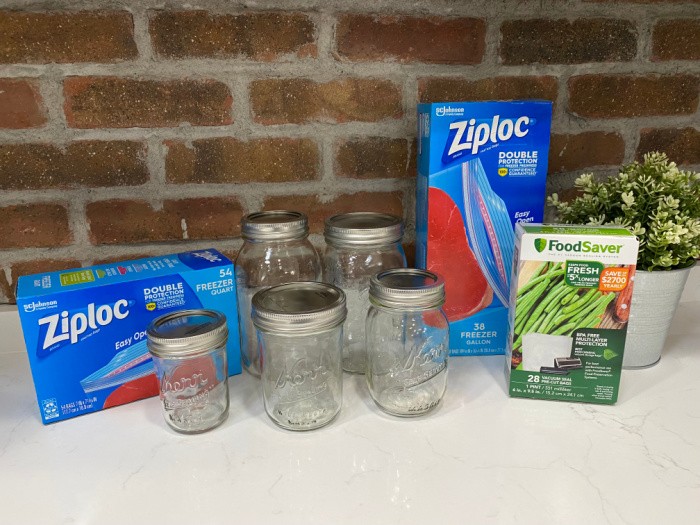

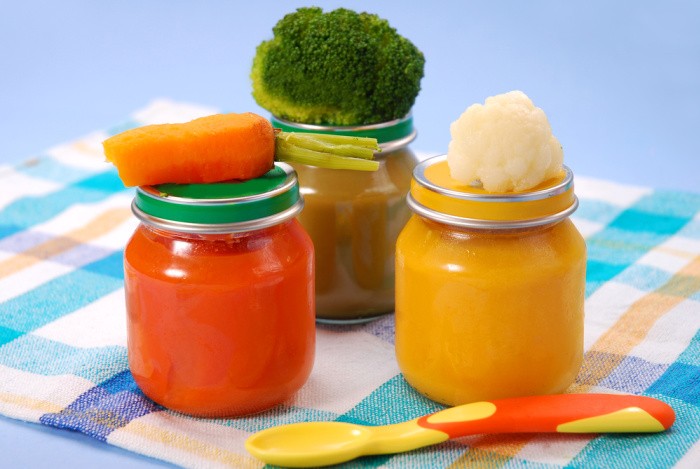

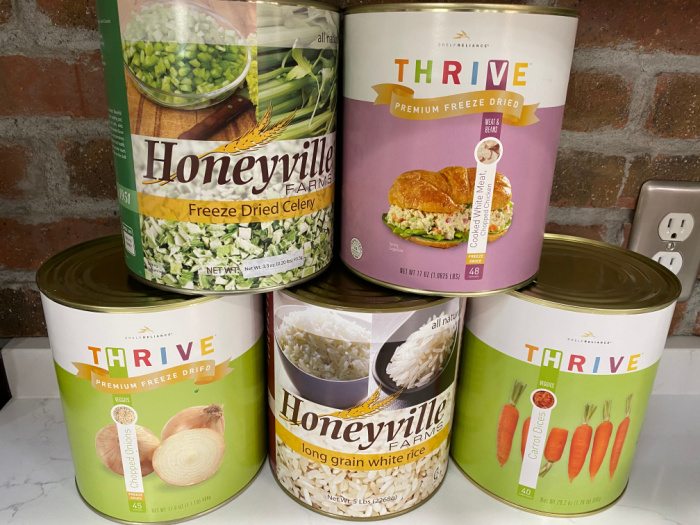
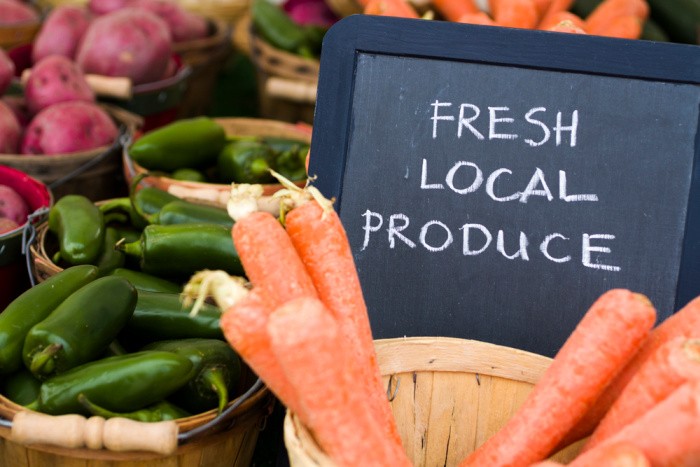
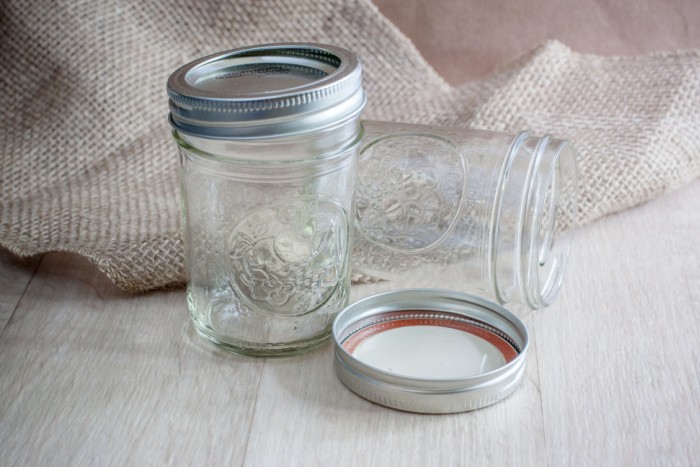
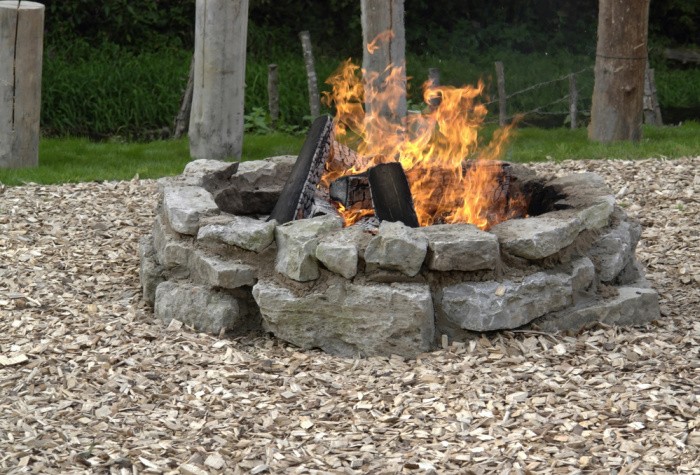













You definitely need to keep extra food storage containers when possible. We have extra jars, ziplocks and Mylar on hand because collection doesn’t stop once an event happens.
Right now is harvest time for pecans, pumpkins, sumac and persimmons not mention any game collected.
What if you manage to grab a large bag of rice as things unfolded? Your probably not going to go straight into eating it so you’ll wanna store it away from rodents. Even without power you can stuff it into jars and seal the lids and it’ll last a long time.
Pecans and mushrooms how do you store them without power? Same a squirrel. Bury in a cold place but unlike them we want to use containers.
I adopted a habit which can be good and bad from my grandparents which is I never met a container I didn’t like lol. They come in handy but I gotta clean out ever so often.
Hi Matt, a great reminder to have storage items after an event. You can always use jars, any jar works for storage. Oh, fresh pecans sound awesome!! I still remember drinking water or milk out of dried beef (for creamed chopped beef) jars, they were heavy glass and they still are today! Linda
Linda, another great post. Here’s a tip for those who store water in mason jars. Use your wide mouth canning funnel when you fill them. This helps you avoid getting water on the outside of the jar. Just be certain the jars are dry on the outside before you put the lids and rings on. Otherwise your rings will rust. I store water in mason jars next to the dehydrated or freeze dried food so I know I’ll have enough water to prepare the food.
I know you said you can eat some freeze dried foods straight from the package without rehydrating them, but aside from freeze dried ice cream, I don’t recommend doing so. The food WILL rehydrate in you mouth, stomach and intestines as it digests and that in turn will dehydrate you. That said, eating freeze dried corn straight from the package is almost like eating candy.
And I’m putting in another plug for Aquarain water purifiers, which I believe to be the best–and they are made in America.
HI Ray, great tip on the mason jars and the funnel! You can never eat dehydrated food without water, that’s for sure. You are right, freeze-dried corn is like candy!!! LOL! I need to order the Aquarain water purifier, thank you for the reminder. Love it! Linda
Just learned the Berkley water filter has a law suit against it….don’t have details…thot you might want to check it out.
Hi Sandra, interesting. I know they can’t be shipped to California and Iowa for various laws. I know someone who sells them, I will see what he says. Thank you, Linda
Please let me know if you can what you do find out
HI Sandra, I will let you know. Linda
Thank you
Just want to say thank you for your articles … While I may not comment on many of them, I do read them all, as I’m sure others also do. Wanted you to know we’re out here. As for this article, I’ve went a little glass happy in my storage (From mason jars to gallon jugs for water) Now I’m waiting for the expected earthquake I’ve incited, to put me back to square one. LOL
HI Leam, we would all have a mess if we had mason jars filled with food or water on those pantry shelves. LOL! Those jars and jugs should be fine. The odds of an earthquake are there but we still have to be prepared. I always had my jars strapped with Bungies or pieces of 1 by 2’s of wood. I’m not sure during an earthquake they would have made it, it all depends on how bad the earthquake is. Keep up the good work, Linda